By Rick VanSickle
Organized Crime winemaker Greg Yemen is knee-deep in grape juice right now, bringing in the bounty from Harvest 2019 in Niagara.
He’s under (one would assume) an incredible amount of pressure after a 2019 that was arguably the best year of his professional life in winemaking. Accolades from a national wine competition for his Beamsville Bench wines include:
• Number two small winery in all of Ontario
• Number four small winery in all of Canada
• Number six winery in all of Canada
• Platinum Award for 2017 Cuvée Krystyna Chardonnay
• Seven wines entered, seven wines awarded medals
That’s a lot of praise for a winery that produces no more than 5,000 cases a year, all from estate grown fruit. But knowing how hard Yemen works, until recently under the radar, it’s not that surprising.
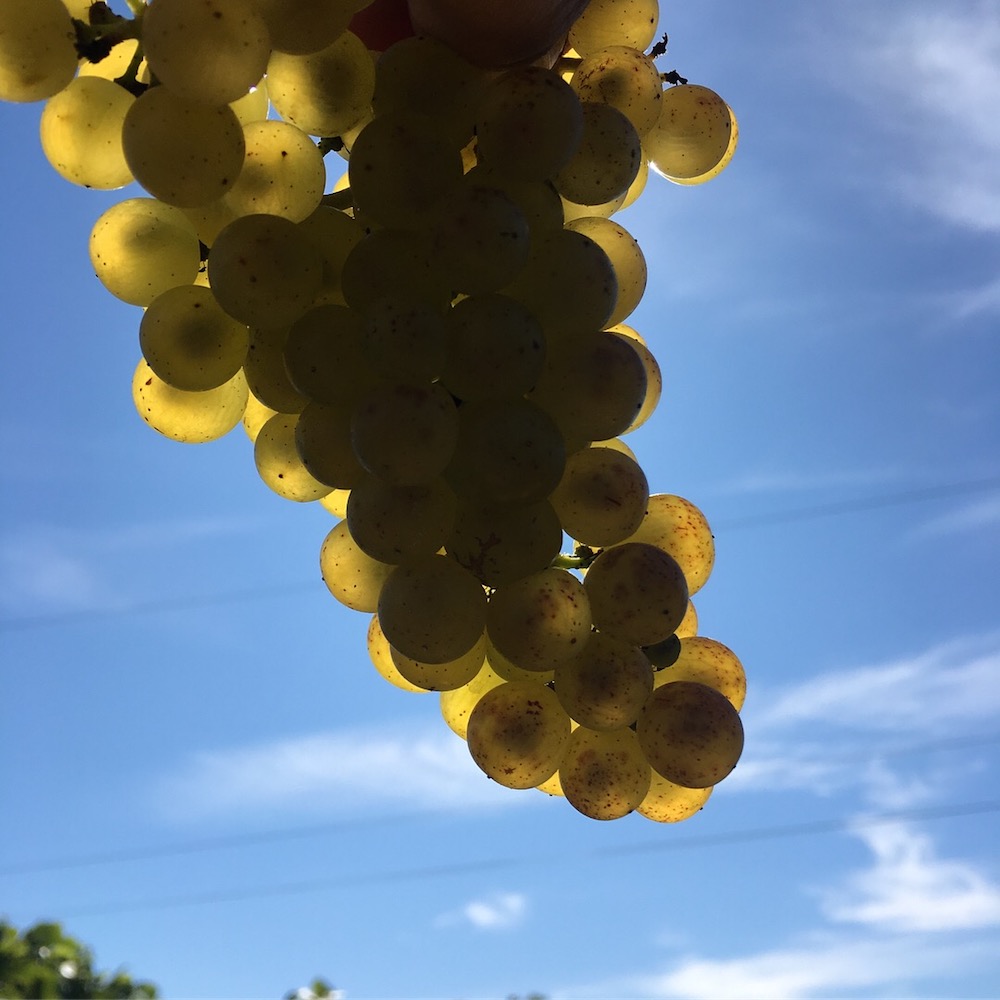
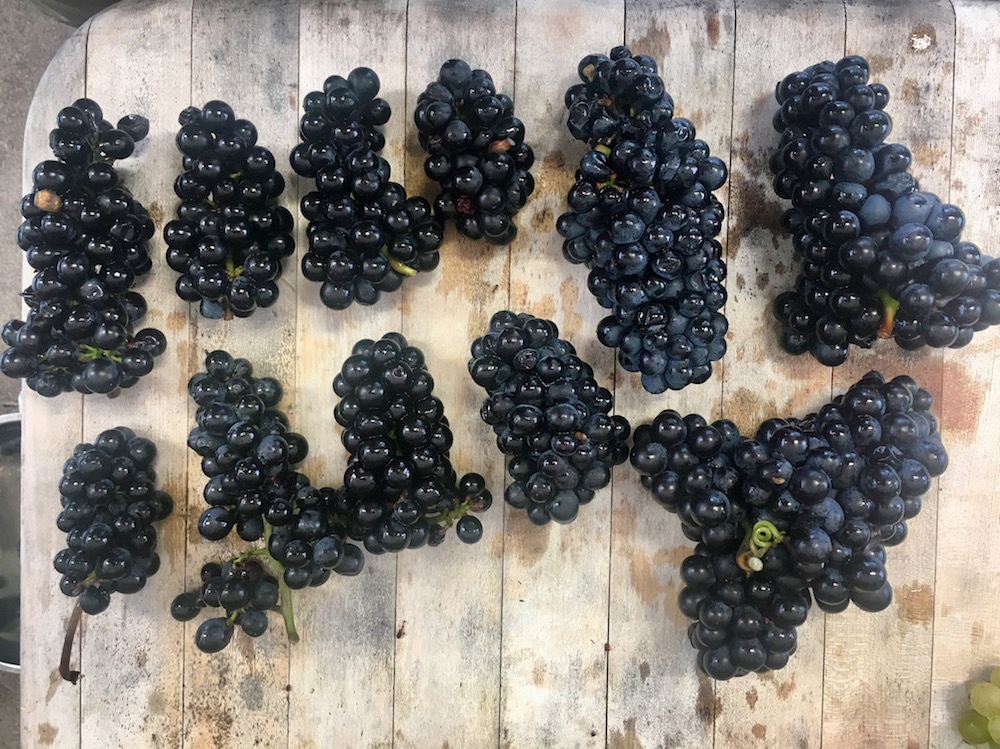
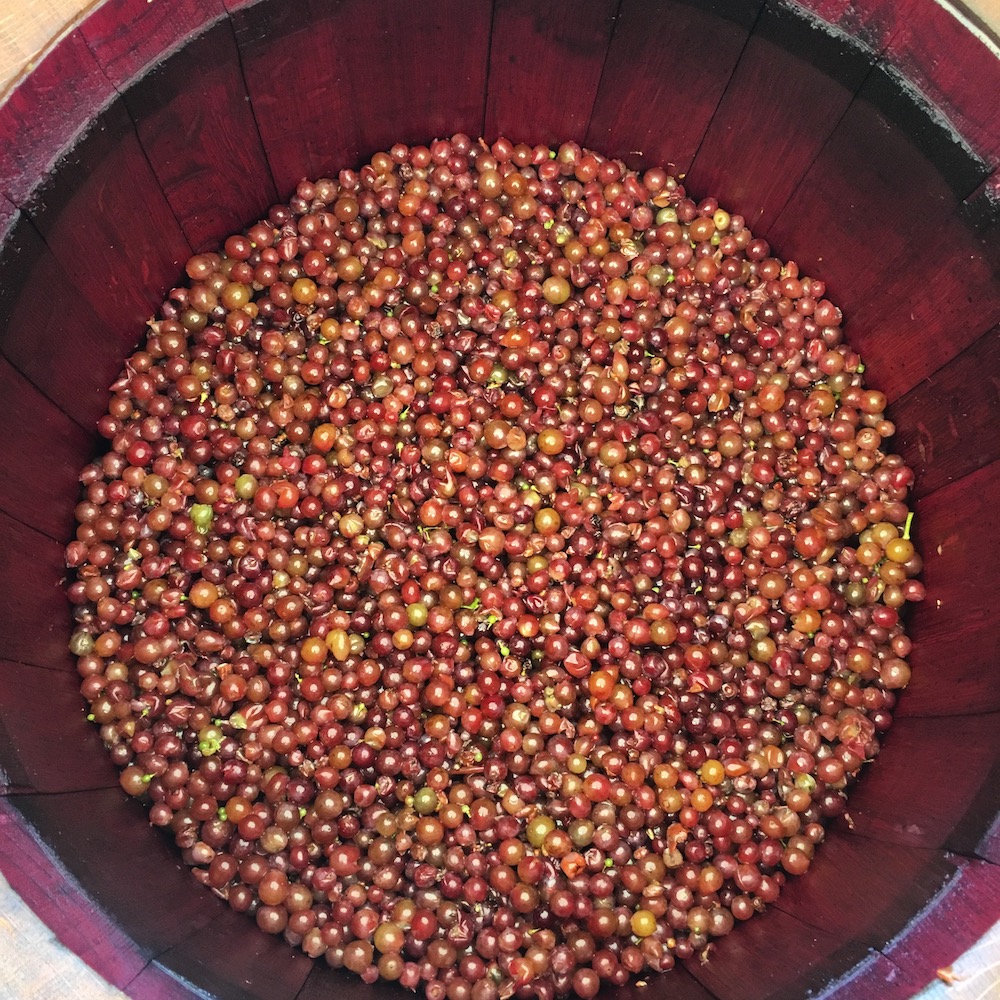
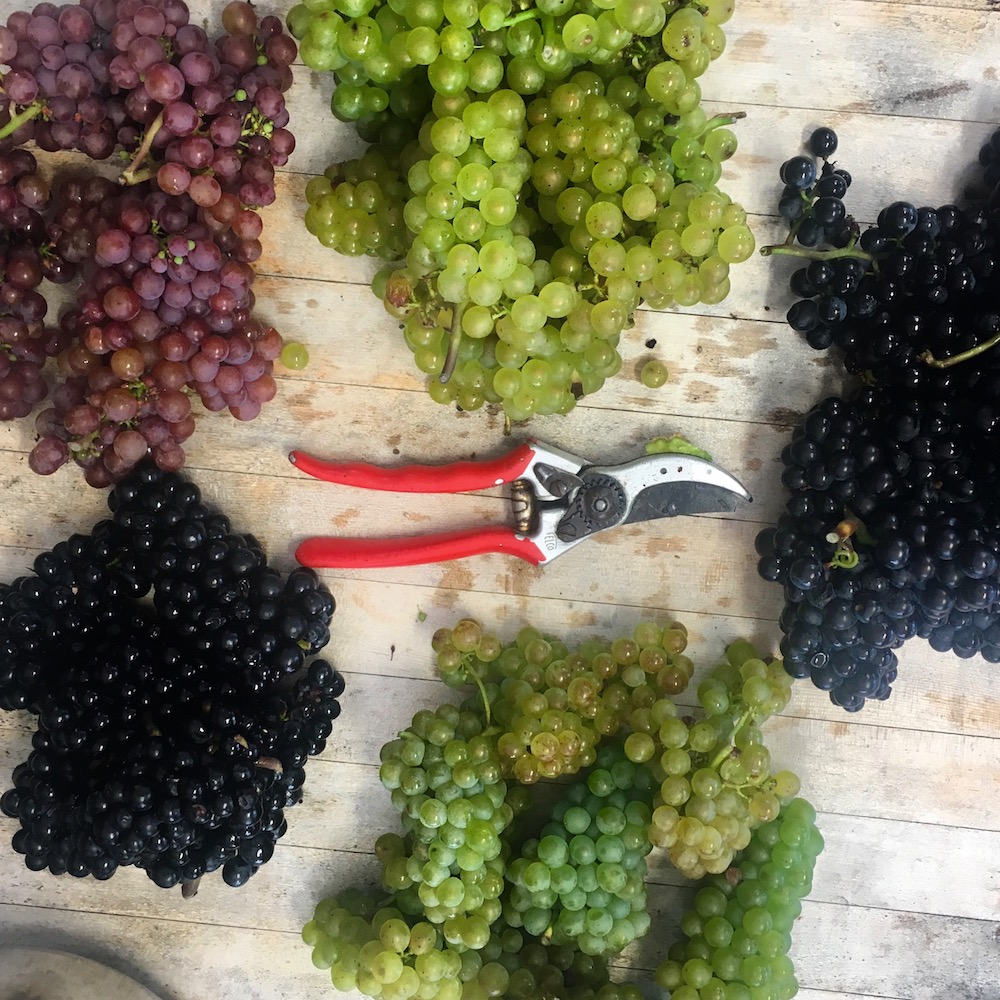
In a few short years, Yemen has taken his passion for creative winemaking and shaped a portfolio that combines artistry and tried and true methods that have always served Organized Crime well and set it apart from others on the Beamsville Bench — we are talking appassimento here.
Under Yemen, however, those kiln-dried grape (the Bordeaux varieties) wines have been toned down as he lets more of the Beamsville Bench terroir shine and has implemented many tweaks to the mostly white portfolio that coaxes a more “elegant, balanced and drinkable” style of wine he himself likes to drink and make.
It’s a hands-on approach and attention to detail from growing the grapes to finishing the wines. “I’m touching the grapes at every stage,” he says.
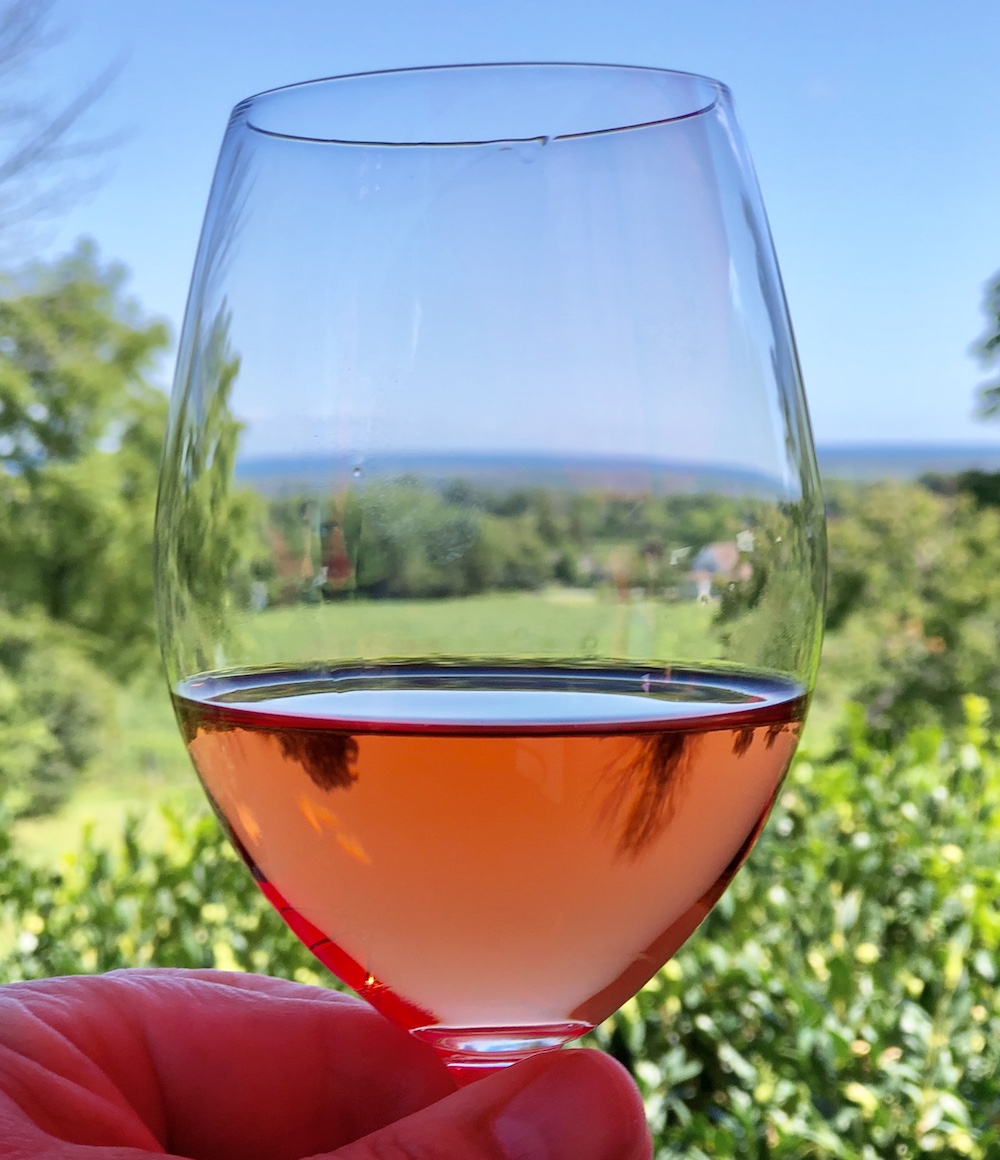
Yemen experiments with wild fermentation (partial and full), malolactic fermentation (partial and full), skin fermentation, skin contact, lees aging, use of different vessels for fermentation and aging including puncheon, foudre, neutral oak barrels, concrete and stainless steel. It all adds up to an eclectic portfolio that strives (and achieves) to be something different and always surprising.
Yemen, who began at the winery working with head winemaker Ross Wise at Organized Crime in 2014 and took the reins as chief winemaker in 2016, is that steady hand Organized Crime has needed to bring purpose to the wide-ranging, but tiny, production at the estate on Mountainview Road.
The winery was started in 1999 by Jan Tarasewicz and his wife Krystyna when the only other neighbours on the precious piece of real estate in the area were Thirty Bench and EastDell (where the now sold Mike Weir winery is). The wines were first made by winemaker Andrzej Lipinski (owner of Big Head Wines), and an early pioneer of the kiln-dried style of wines. His method of drying grapes (appassimento) in old tobacco kilns from Norfolk County was something Lipinski pioneered and used at various wineries where he has made wine and it is the signature style of wine at his own Big Head winery.
With Yemen in charge, the dried grapes have gradually been diminished to raising the Brix only a couple of degrees to add that little bit of concentration and complexity, but not defining the style. In other words, letting the Beamsville Bench’s minerally-driven terroir have a voice.
It’s a good path Yemen and owner Tarasewicz (sadly, Jan’s wife passed away in 2016) are on. And the awards that are piling up are testament to that.
The small boutique winery sits on south-facing land that hangs over the hillside edges of the Beamsville Bench, and provides an ideal environment for cool climate winegrowing. The property is planted to 27 acres of grapes, which translates to between 4,000 and 5,000 cases of wine per year.
Here’s what I liked from a portfolio tasting just before harvest began.
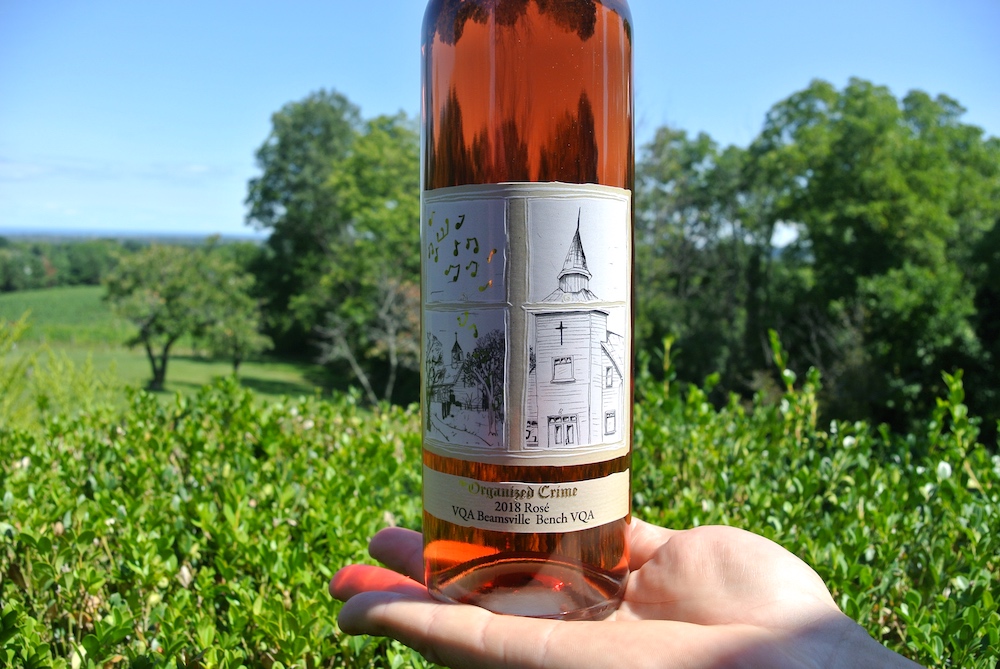
Organized Crime Rosé 2018 ($17, 88 points) — This is a purposely-made rosé made from 80% Pinot Noir and the rest evenly split between Cabernet Sauvignon and Cabernet Franc. A lighter hue in the glass, understandable considering the vintage, with aromas of fresh-crushed red berries and subtle herbs. It’s delicious on the palate with depth, light tannins and a range of raspberries, cherries and cranberries with a nervy finish.
Organized Crime Sauvignon Blanc 2018 ($19, 89 points) — 15% of this whole-bunch pressed Savvy sees neutral oak with the rest stainless steel. The nose reveals tempered tropical fruits, grapefruit, citrus, grass and light herbs. It’s tangy and fresh on the palate with citrus, herbs, hay and vibrancy through a super-dry finish.
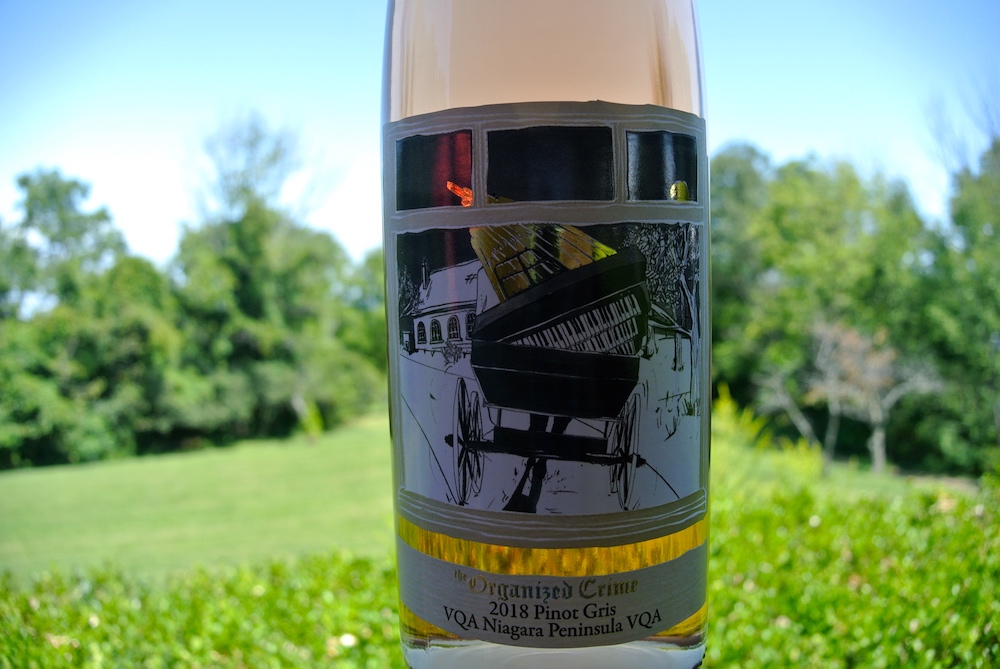
Organized Crime Pinot Gris 2018 ($21, 90 points) — Yemen works extremely hard at making this Gris anything but ordinary. 5% of the fruit is skin fermented, which underwent full malo, a portion of the fruit was partially wild fermented and all of the fruit had an 18-hour soak on the skins. “I’m trying to do everything I can to it to make it interesting,” Yeman says. It’s rich and sassy on the nose with notes of bright apple, melon, peach and subtle spice notes from a bit of oak aging. It’s a touch off-dry on the palate and shows ripe orchard fruits, some melon and tangerine to go with spice accents. Delicious!
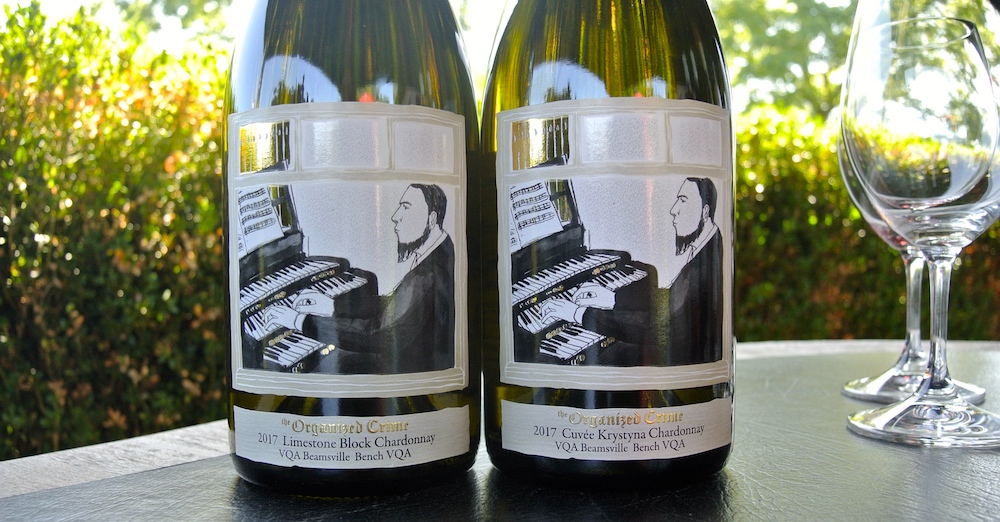
Organized Crime Limestone Block Chardonnay 2017 ($21, 90 points) — So, whole bunch pressed, partial wild ferment, full malo, no lees stirring and 10 months in oak (60% puncheon, the rest foudre, mostly older wood). A highly mineralized nose oyster shells, subtle spice, pear and apple notes. It’s lean, fresh and minerally on the palate with quince, citrus, light spice notes and a finessed finish. A showcase for Beamsville Bench Chardonnay.
Organized Crime Cuvée Krystyna Chardonnay 2017 ($28, 93 points) — In October 2016, Organized Crime lost their matriarch, Krystyna Tarasewicz. It is in her honour and memory that that this cuvée is made. The fruit was hand picked and the free-run juice was transferred to French oak puncheons to ferment using native yeasts, which took about 6 months. Such a beautiful Chardonnay with a nose of pear, apple, quince, fresh squeezed lemon, stony minerality and integrated spice notes. A perfectly balanced and complex wine on the palate with harmonious stone fruits, zesty citrus, a subtle reductive note, caressing oak spices, vanilla and finessed through a long finish. Can age 5+ years.
Organized Crime Wild Ferment Riesling 2017 ($21, 90 points) — As the name states, the fruit was 100% wild fermented in a 1,000 litre oak cask and spent nine months resting on the lees. A complex Riesling with lime, green apple, river-rock minerality, salinity and grapefruit notes on the nose. It has some flesh on the palate and a touch of RS, but the tangy, fresh citrus fruits and minerality drive the boat here and hide any cloying sweetness. I sense a big future for this wine. You might want to put a bottle or two to tuck into the cellar for 4+ years to accentuate the mineral notes.
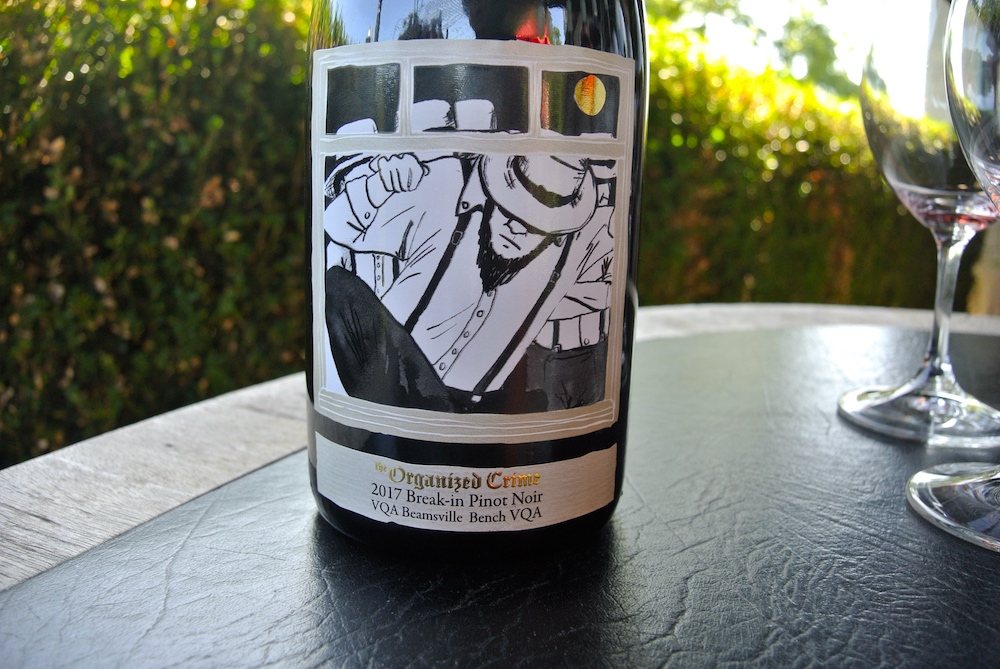
Organized Crime Break-In Pinot Noir 2017 ($21, 88 points) — The fruit was fully de-stemmed into concrete and wood for a five-day cold soak. The grapes spent between 19-21 days on the skins fermenting, with a mix of wild and inoculated yeasts. The wine went straight to barrel (all French, 8% new) after the primary ferment, and spent 10 months undisturbed before bottling. This follows Yemen’s fondness for “light, juicy, drinkable wines.” It shows a lighter colour in the glass with medium body and a nose of cherries, raspberries, integrated spice and violets. The cherries rule the roost on the palate with touches of brambly raspberry, anise, earth and freshness on a finessed finish.
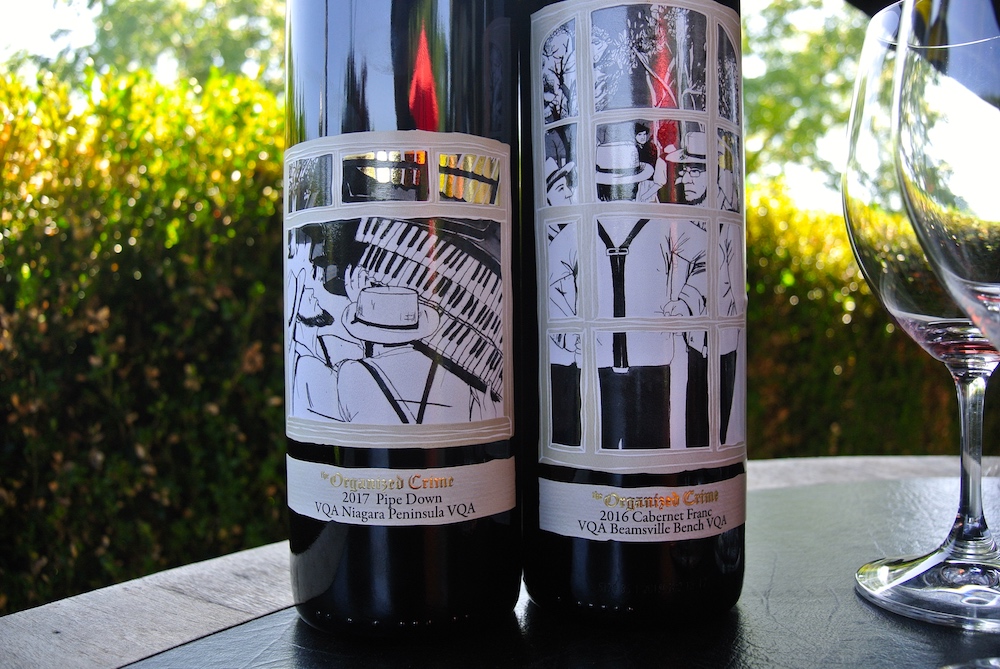
Organized Crime Pipe Down 2017 ($22, 91 points) — The Pipe Down is a blend of the four Bordeaux red varieties planted at the estate (Cabernet Franc, Merlot, Cabernet Sauvignon and Petit Verdot), with a portion of the grapes dried appassimento style for 14 days and aged in French oak, 23% new wood. An inviting nose of sweet blackberries, black currants, raspberries, kirsch, tobacco leaf and earthy/spice notes. It’s deep and rich on the palate with black currants, cassis, plums and red fruit accents to go with integrated herbs and spice on a lifted finish. Can cellar 5+ years. Good value wine.
Organized Crime Cabernet Franc 2016 ($42, 92 points) — 45% of the fruit was dried appassimento style for 14 days and the wine was aged in oak barrels (40% new) for 16 months. The warm 2016 vintage certainly helped the Bordeaux varieties on the Beamsville Bench (what little there is) to enable full ripening. The nose on this CF shows a range of ripe dark berries, cherries, earth, Cuban cigar leaf and a rich, overt baking spices. It’s lush and ripe on the palate with deep, rich black currants, cassis, red berries, plums, integrated herbs, thick spice notes and surprising finesse on the finish.
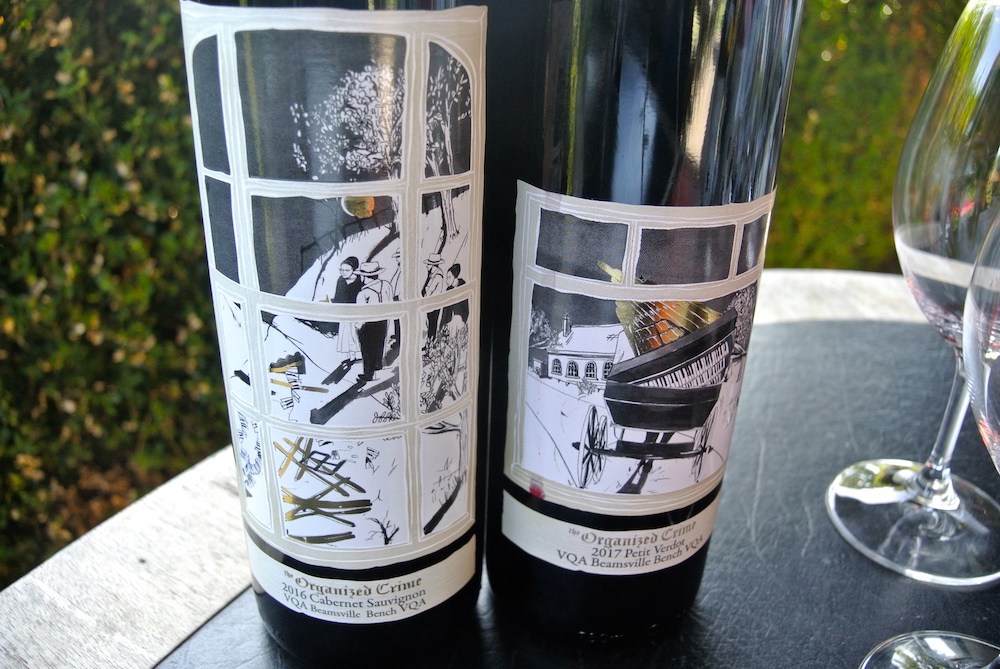
Organized Crime Cabernet Sauvignon 2016 ($36, 90 points) — Cabernet Sauvignon is the hardest of the red grapes to ripen on the Bench, but long hang time and intense heat of the vintage plus some further concentration of the berries from drying the grapes all conspired to offer this ripe and lovely Cab Sauv. The nose shows fragrant and ripe blackberries, currants, cassis, elegant spice and earthy/loamy accents. It’s layered and complex on the palate with firm tannic structure, defined dark berries, elegant oak spices and enough acidity to keep it balanced through the finish. Can cellar 7+ years.
Organized Crime Petit Verdot 2017 (Price NA, not released yet, 92 points) — This single-vineyard Petit Verdot is a first for Organized Crime. The fruit was 100% dried to raise the Brix from 23 Brix to 25 Brix. The fruit was whole cluster pressed and fermented in concrete then moved to neutral oak for aging. It’s a bit tight on the nose when I tasted it but after vigorous swirling it opens up to pretty red fruits, violets, cassis and light spice notes. It’s full-bodied and rich on the palate with an array of red and dark fruits, polished tannins, some sweet herbs and tobacco notes with intensity and depth through the finish. One to watch as it develops after release.








Comment here